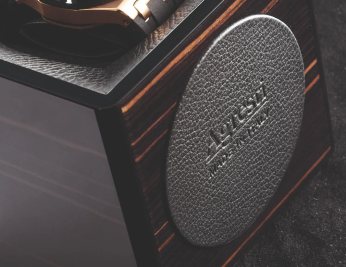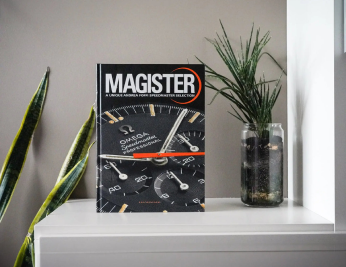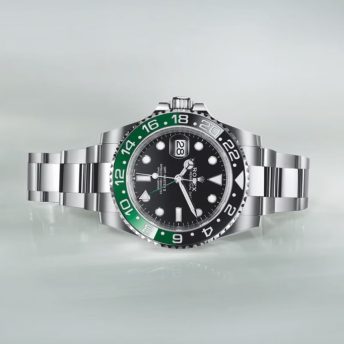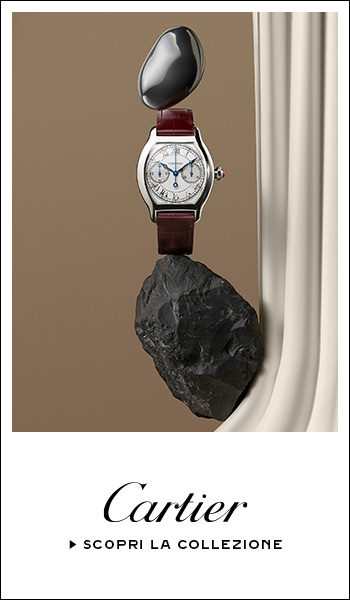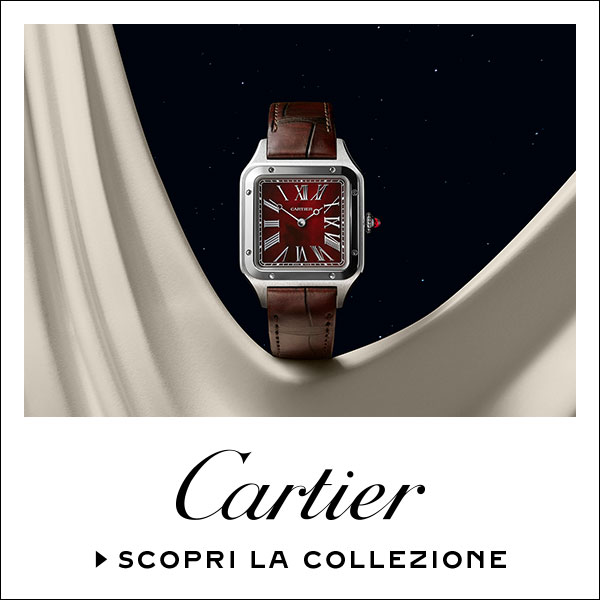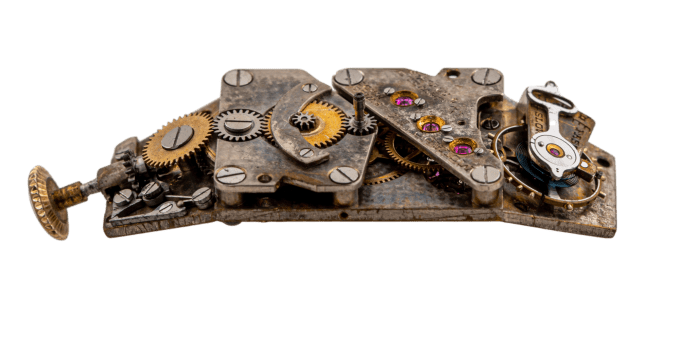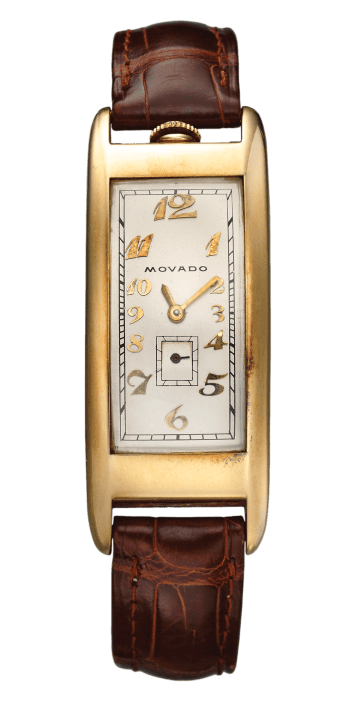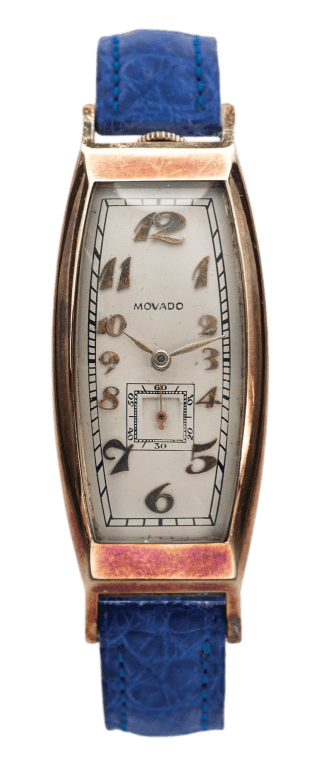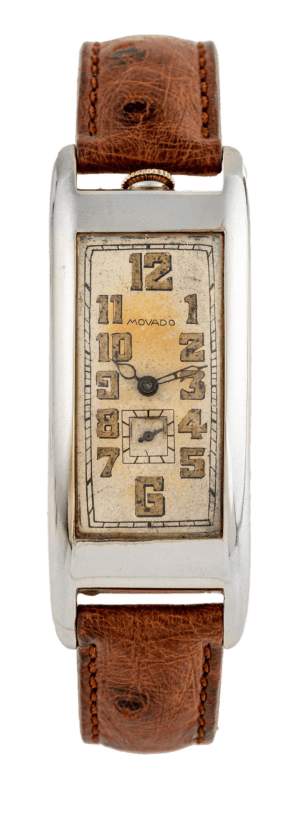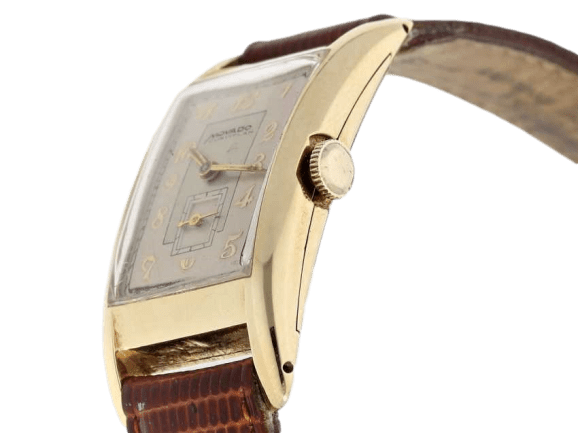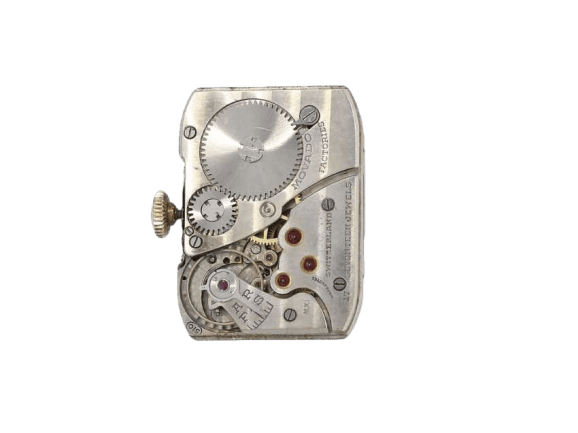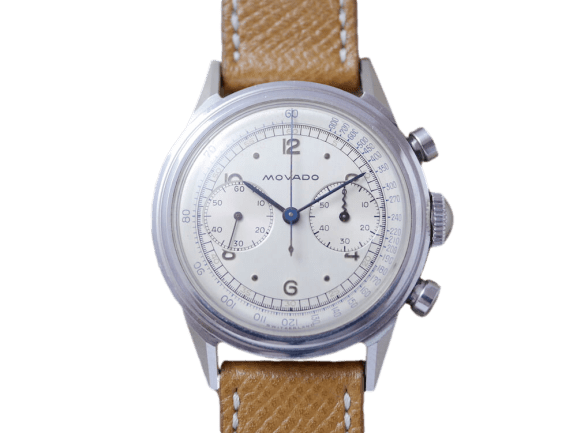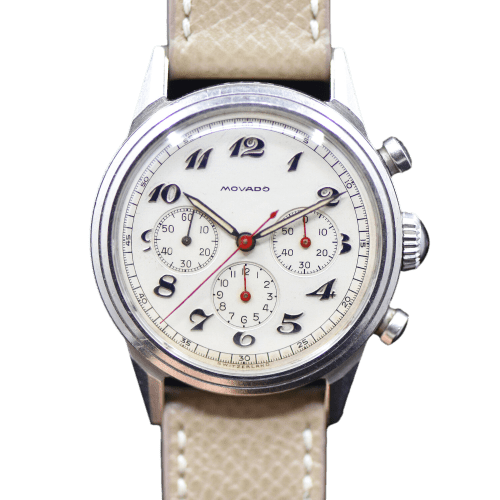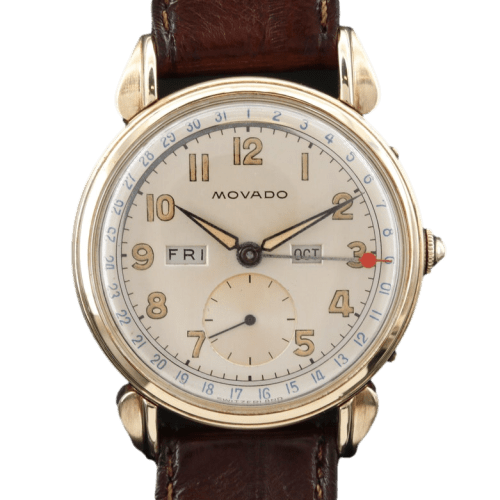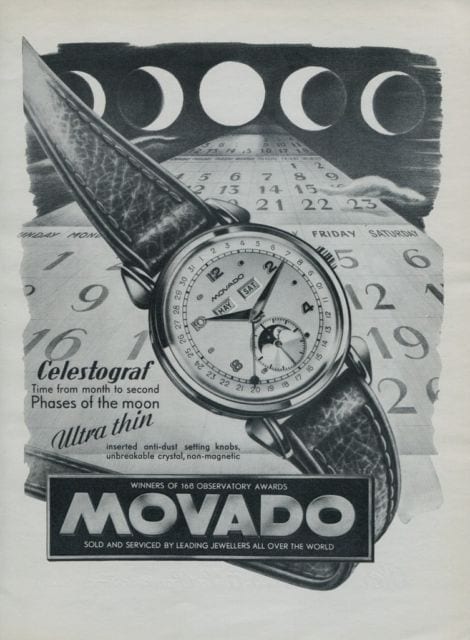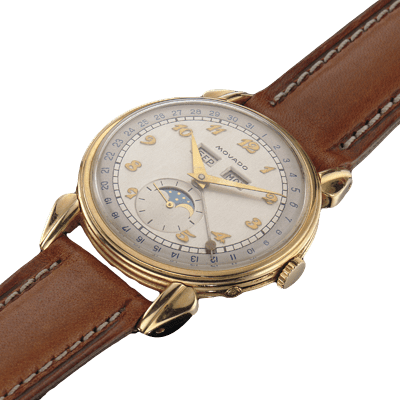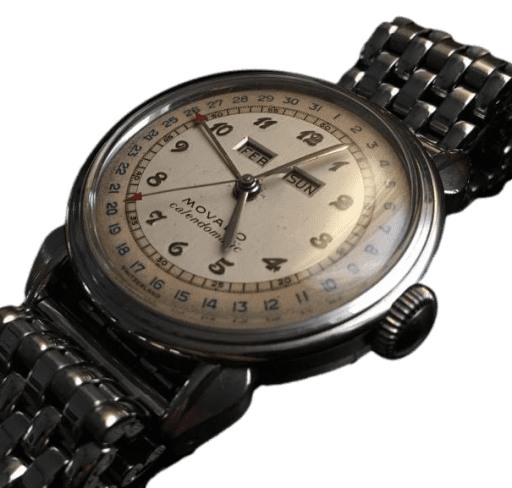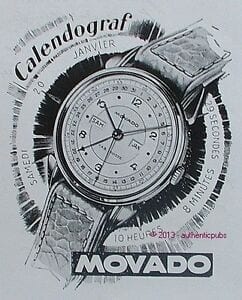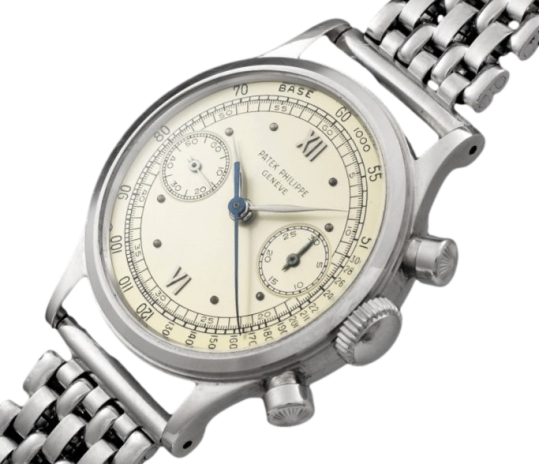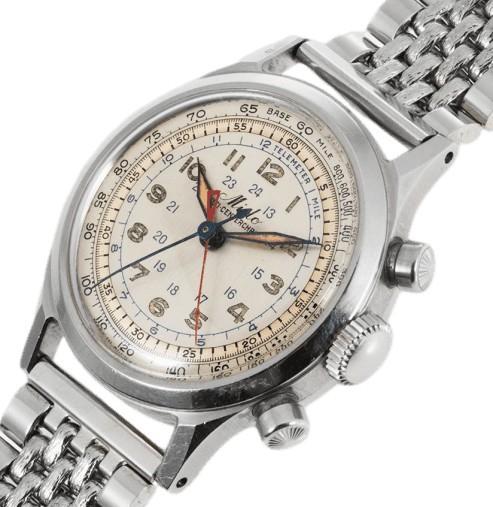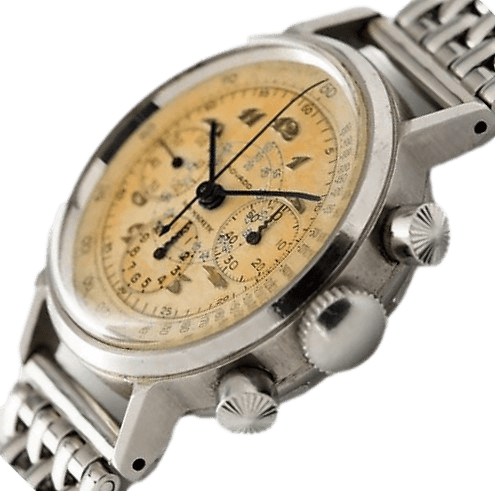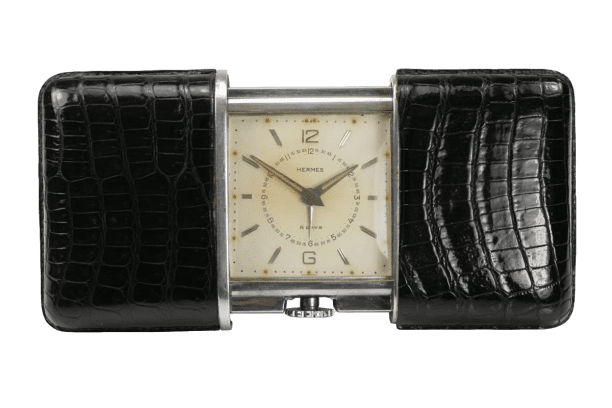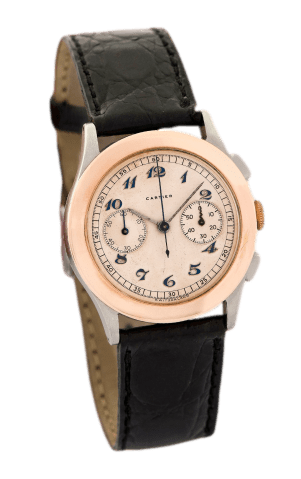In 1905, the Ditesheim brothers started the story of “Movado” watch company. Why is that important? It’s Esperanto for “always in motion“, which is perfectly representative of the watchmaker’s unending committent to horological innovation. To fully understand this choice, and this brand as a whole, we need take a few steps further back in time: more precisely, to 1881.
On a personal note, before we dive in, I find it rather sad that, given its rich history and quality of its timepieces, Movado’s watches aren’t receiving the amount of attention, credit and value that it most certainly deserves: especially when, as you will learn in this article, you consider how innovative this watchmaker was.
(Cover Credits: Mimandcrocket.com)
Early Years
The year is 1876 (yes, we said 1881, but hear us out), and the Ditesheim family had just moved to La-Chaux-de-Fonds, not only to escape the Franco-Prussian war, but also to pursue their dream of setting up a watchmaking company.
Five years later, in 1881, once Achille Ditesheim completed his horological studies, the dream finally started to become a reality in the form of a modest laboratory, which, over the course of a couple of years, grew to be a full scale factory in 1897, employing 80 people.

This is definitely an extraordinary achievement when you consider that in those same years, watchmakers of the likes of LeCoultre employed 100, meanwhile Audemars Piguet had just 10 watchmakers.
In its early years, the watch company’s operations were limited to mounting and assembling movements (which came from third parties) into their pocket watches. During this time, the company operated under the name “L.A.&l. Ditesheim, fabricants”, after the three brothers: Léopold, Achille and Isidore.
The first recorded use of the now iconic term, “Movado“, can be traced to the 2nd of May, 1903. However, it would be another two years before the company officially traded under that name.
Company Developments
Right from the onset, Movado proved itself to be a very avant-garde watchmaker, as they were one of the first horological companies to invest in electrically-powered machinery. This bold and innovative move proved successful: the revolutionary equipment boosted productivity, and by extension, increased its workforce size.
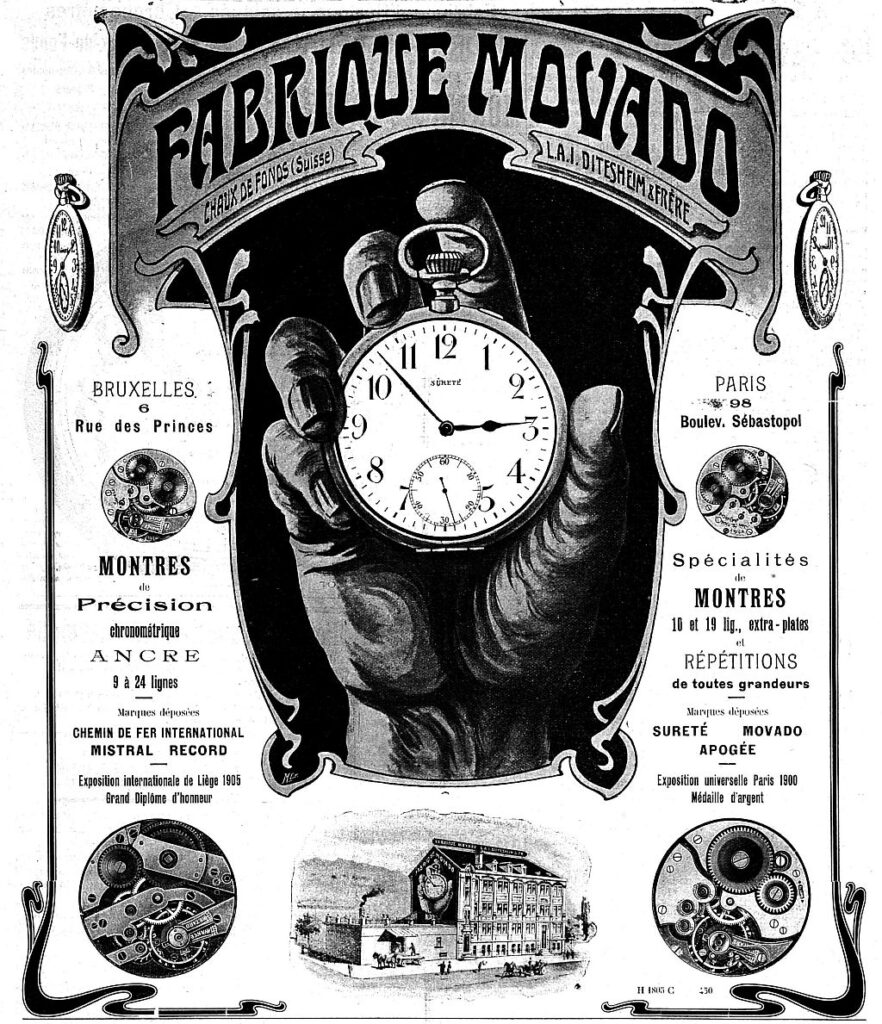
Another benefit that their investment brought was that it allowed Movado to manufacture the previously outsourced components. Given these tools, resources and increased workforce, they began mass (for the time) producing ladies’ watches.
Between 1917 and 1948, Movado grew steadily to reach the 300+ headcount in the factory, becoming a real “giant” in the Swiss watch industry, both for workforce, but also in terms public perception.
Movado’s Curvaceous Cases: the Polyplan & the Curviplan
The early 1900s was a period in which Movado really thrived when it came to horological innovation. One metric to prove this was the sheer number of new patents that they registered between 1902 and 1912.
Of these numerous patents, the most important was the Swiss Patent N°60 360 of June 7th, 1912: the Polyplan. The story goes that this revolutionary idea came about when Isidore Ditesheim expressed his desire to create an ultra-ergonomic timepiece, which really and truly “conformed” to the wrist.
The Polyplan name derives from the multi (poly) level shape and design of the movement: arranged in three distinct layers. This moment of brilliance allowed the movement (and subsequently the case) to adopt a splendid and curvaceous shape, far more pronounced than any other watch.
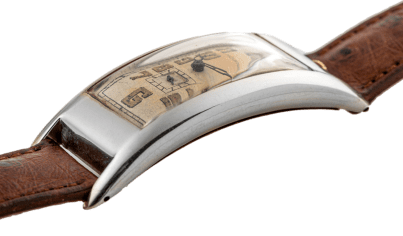
Between 1912 and 1917, around 1500 exemplars of this model were manufactured, making it one of the rarest and most sought-after models of the Movado family amongst collectors. To put it into perspective: in November of 2019, the Antiquorum auction house sold a Polyplan exemplar for the price of 10,625 CHF (€9,800).
Not as “extreme” in its curvature, but rightfully belonging in the Movado family was the Curviplan. In its many metal and dial variants, the Curviplan was produced between 1926 and 1940, and was powered by the niche caliber 510, which adopted a curved superior bridge.
The Ermeto
First released in 1926, the Ermeto is perhaps the model which is most synonymous with the Movado brand: it was marketed as a trusty travel watch with all the design canons of an elegant and conservative pocket watch.

Its name comes from the ability for the clock’s movement and dial to be “hermetically-sealed” within an adjustable metal case, which was often given a luxurious leather over-layer.
A year after its first release, in 1927, Movado added an incredibly fascinating and innovative touch to the Ermeto: a (Movado-patented) mechanism by which the movement can be wound with the opening and closing of the “hermetic” case. The revolutionary feature made the Ermeto into somewhat of a “pseudo-automatic-watch”.

Movado’s most important Chronograph Movements
Towards the end of the 1930s, Movado introduced chronographs into their portfolio for the first time, all mounting totally-in-house movements: these were the M90 and the M95. One easy way to tell the difference between the two is that the M90 has 2 sub-dials, whereas the M95 sports 3.
The M90 was first released in 1938, and was in production all the way until 1965, meanwhile that M95 was first made just a year after the M90 (’39) and was mounted on Movado’s watches until the early 1970s: when the brand began their collaboration with Zenith (1969).
The Calendograf, Celestograf and Calendomatic
Separating these three iconic Movado models was the type of movement they mounted, and therefore the type of complication they displayed.
The Calendograf, more commonly known as the “Movado triple calendar“, was introduced in 1938, and remained in production until 1954. It’s powered by the caliber 475 (a derivative of the Movado 470) and displays the hours, minutes, seconds, day of the week, date and month.
Next, the Celestograf, or Astrograph for the American market, can be described as “a more complicated Calendograf”, in that it can display all the metrics mentioned before, but has an extra feature: a lunar phase complication. This model was produced between 1947 and 54, and like the Calendograf, is also powered by a caliber 470 derivative: the 473.
Produced between 1948 and 1954, the Calendomatic is the automatic version of this “complicated” family. Other than the automatic caliber 220, it’s pretty much identical to the Calendograf.
The relationship between Movado and François Borgel
Aside from their collaboration with Zenith, Movado had a hugely important rapport with the legendary casemaker François Borgel, regarded as one of the most talented men of his craft in the 20th century, and was the face behind some of the iconic waterproof cases seen on Patek Philippe, Mido and Ulysse Nardin watches.
Having said this, see if you can spot any similarities between these 3 watches. From left to right: the Patek Philippe “Tasti Tondi”, Mido Multicenter and a Movado chronograph.
(If you want to know a little bit more about the iconic Patek Philippe “Tasti Tondi”, look no further than our comprehensive guide to the model!)
Borgel’s cases have a distinct and unmistakeable design, but if you’re unsure, you can always check the inner face of the caseback. Here, we can find Borgel’s signature engraving: the letters F and B placed above a key.

There isn’t much literature to suggest the exact start and end dates of the Movado-Borgel contract, but after I spoke with a seasoned Movado collector, I’ve learnt that there are two “extremities”: the first is a Movado “Acvatic” (the brand’s first waterproof timepiece), which was released in the mid 1930s, and the “last” is an M95-powered Movado chronograph produced towards the end of the 1960s.
Movado-signed Collaborations
The timeless elegance of the brand’s case-designs and Movado’s dials certainly didn’t go unnoticed. Many high profile and sophisticated brands from the horological, jewellery and fashion industries were lining up for potential collaborations: have a look at some examples below!
As you can see, many of Movado’s signature items, like the chronographs or the Ermeto, were sold bearing another company’s name, like Tiffany’s, Hermes, or even Cartier: a sort of double signature in Movado’s own way.
Hopefully this article made you learn something totally new, and perhaps even changed your opinion of this incredibly underrated and innovative brand! What do you think? Let us know in the comments below or on our Instagram page!
-Translated by Patrick R.

